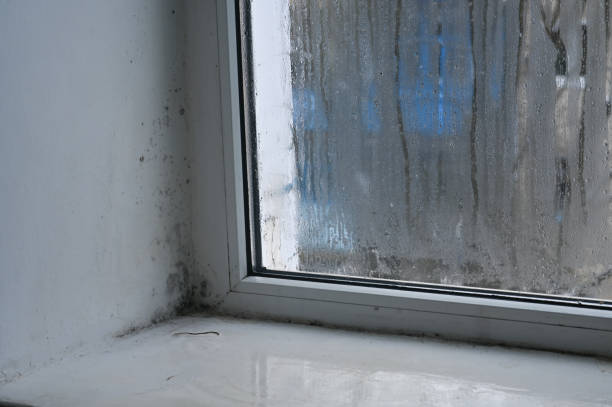This is the best way to stop condensation and mould forming on your windows this autumn.

As the temperature drops, you probably start to notice moisture building up on the windows of your home. It’s important to get rid of it before it becomes an issue in the winter.
With the onset of cold weather and rain, we all soon face a seasonal problem in our homes: condensation and mould. Condensation on windows is a common occurrence in autumn. If left unchecked, this moisture can quickly lead to mould, which is not only unsightly but also a health hazard. So it’s best to start early to avoid damage this winter!
Condensation happens when warm, moist air inside your home meets cold surfaces like window panes. The hot air has more water vapour, and when this vapour suddenly cools when it hits the glass, it turns into water droplets. If you don’t treat these droplets, they can lead to mould growth, peeling wallpaper, paint damage, and more.
It’s important to make sure there’s good ventilation and humidity control to stop condensation forming. If you see any drips, don’t leave them there. Just dry them off with a well-absorbent cloth. And don’t forget to ventilate your home daily, even in autumn and winter. Even so, condensation can still occur. Rather than constantly wiping away condensation, there are ways to get rid of it. The rooms that tend to get the most condensation are often the bedroom, kitchen and bathroom. Here’s the right way to do it in each room.
It’s not unusual for condensation to form on bedroom windows at night. This is often because people switch off the heating while they sleep, which can cause the temperature in the room to drop significantly. Just make sure you don’t switch the heaters off completely, but you can switch them off. It’s also a good idea to avoid drying laundry in this room, as this will increase the humidity, making the room damp and uncomfortable while you sleep.
As you’d expect, the kitchen is a major source of humidity in the home, thanks to all those cooking appliances and the steam they produce. The simplest way to avoid condensation on kitchen windows is to use an extractor hood while cooking and to cover pots with lids to prevent steam from forming. It’s also a good idea to open windows while cooking and keep the kitchen door closed if you can.
- It’s pretty common to find one in a kitchen, but it’s not the best idea from a hygiene perspective.
- The Titanic finally disintegrates at the bottom of the water, ending the wreck of the famous liner.
One simple way to control the steam in the bathroom and prevent it from spreading around the house is to make sure you have a well-fitted shower curtain or shower screen. This will keep the steam in one area and prevent it from spreading.

